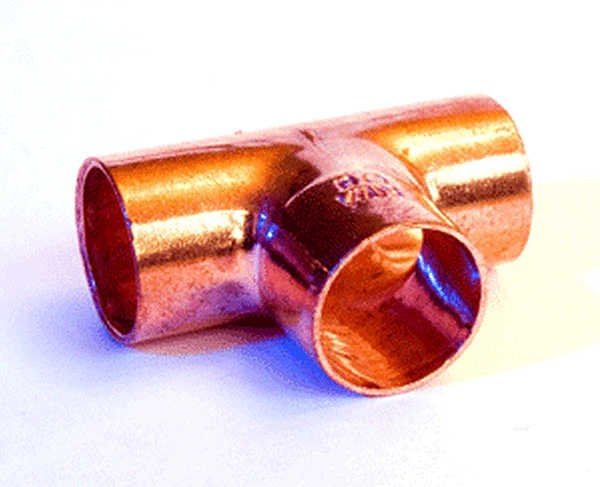Galvanizing Weathering Steel
*Updated January 2024
Can weathering steel (e.g. ASTM A588, A709 Weathering, COR-TEN) be galvanized?
Weathering steel can be galvanized successfully and is considered for applications such as bridges, transmission towers, lamp standards, and pole-line hardware. While it may seem redundant to combine two corrosion protection systems, the reality is weathering steel is typically galvanized for other reasons:
- General availability and cost from a steel supply center
- Individual components for fabrication were only available to be sourced from weathering steel
- An engineer specified ASTM A709 Grade 70W for design purposes only and not necessarily for the primary method of corrosion protection
There are a few attributes of weathering steel to be considered when planning to hot-dip galvanize. Some of these considerations are relevant to specifiers while others are more relevant to the galvanizer who will process the material.

Is the coating produced on this steel going to be similar to the coating produced on traditionally galvanized steel?
Weathering steels generally exhibit noticeably heavier and darker galvanized coatings than traditionally galvanized steels. This is mainly due to higher levels of silicon found in weathering steels (up to 0.40% allowed, but 0.27% to 0.35% common) when compared to a non-weathering (traditionally galvanized) equivalent. Because the steel chemistry of weathering steel is considered reactive and typically beyond the recommended levels for galvanizing as described in ASTM A385, weathering steel fabrications can occasionally develop excessive coating thickness. Although sometimes a thicker coating can be desired to achieve greater longevity, other times excessive coating thickness potentially results in issues with part fit-up or flaking of the coating during shipping and installation. The initial appearance of the galvanized coating on weathering steel can also differ from a typical galvanized coating. A matte gray coating with little or no spangle should be expected when galvanizing weathering steel. Where aesthetics are a primary concern, variations in initial coating appearance among weathering steels and other steels will become uniform and soft gray in color as the coatings weather naturally with time. For more information on natural weathering and the role of steel reactivity on initial appearance, see AGA Publication, HDG Coating Appearance.
Despite these minor differences, other properties of the galvanized coating remain the same. A given thickness of galvanized coating provides protection for the same period of time on weathering steel as it would on traditionally galvanized steel. The same sacrificial protection from scratches benefits both grades of steel.
One more thing to consider when galvanizing weathering steel is that extended chemical cleaning times are often required. Weathering steel is regularly and successfully galvanized by plants that employ sulfuric acid or hydrochloric acid. However, chemical cleaning times can be longer when using sulfuric acid over hydrochloric because sulfuric acid has a different chemical cleaning mechanism – it has a hard time getting underneath the oxides/scales that form on weathering steel, whereas hydrochloric acid cleans from the outside.
Both specifiers and galvanizers often prefer to blast clean weathering steel parts before galvanizing to help avoid long chemical cleaning times with either acids and avoid the potential for excessively thick coatings, but this may come at an additional initial cost as more time and labor are required. The blasting method does not require the specification of a degree of cleanliness nor specific profile parameters; however, Commercial Blast Cleaning in accordance with SSPC-SP 6/NACE No. 3 can be used as a guide. Material Test Reports (MTRs) are commonly used to evaluate the steel chemistry and advise the decision regarding blast cleaning prior to galvanizing.
Employing a hot-dip galvanized coating on weathering steel is relatively common and adds to the corrosion protection of the structure. Typical apprehensions associated with galvanizing weathering steel can be mitigated if you know, and communicate the characteristics of the steel with the galvanizer prior to dipping. If possible, obtain an MTR and pass it along to the galvanizer.

Can I hot-dip galvanize other steels that have copper in them?
Yes, some steel chemistries containing copper are successfully galvanized. Although weathering steel is currently the most common copper-containing steel seen at a galvanizing plant, other steels, like stainless steel, can also contain higher amounts of copper. Many architects and engineers ask if copper-containing-steels can be galvanized because they have heard galvanizing copper-containing steel damages galvanizing kettles. In most cases, this is not a practical concern as there is only concern for kettle damage when the copper level in the kettle exceeds 0.23%. Also, pure copper cannot be galvanized because there is no iron for the zinc to metallurgically react with. Without a metallurgical reaction, a galvanized coating cannot develop.
© 2025 American Galvanizers Association. The material provided herein has been developed to provide accurate and authoritative information about after-fabrication hot-dip galvanized steel. This material provides general information only and is not intended as a substitute for competent professional examination and verification as to suitability and applicability. The information provided herein is not intended as a representation or warranty on the part of the AGA. Anyone making use of this information assumes all liability arising from such use.



